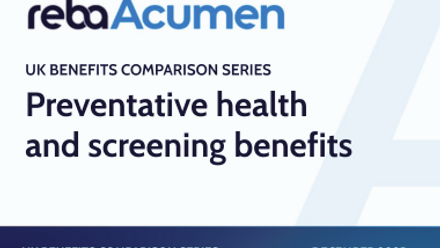Expert view: Preparing for mandatory payrolling in 2027

Payrolling of benefits has been around since 2016, so this may not be new for some employers, but for others this will be a big change to the way they report the taxable benefits and expenses that they provide to their employees.
So, what’s changing and why?
Currently, if an employee receives a benefit in kind, let’s say private medical health insurance, and this is reported via a P11D [cash value of work-related taxable expenses and taxable benefits] each year, the way the employee pays for the tax due on that benefit is via a change in their tax code. These tax code changes are usually issued a few months after the information is received.
This can cause delays in the employee paying the right amount of tax as P11Ds are only reported to HM Revenue and Customs (HMRC) in July each year. Let’s use 2025 as an example.
July 2025’s P11D would have reported the retrospective benefits received from the previous tax year, this being April 2024-March 2025. So:
- April 2024-March 2025: employee has private medical health insurance for the first time
- July 2025: HMRC are made aware of the taxable benefit in kind
- Approximately September/October 2025: the employee will have a change in tax code from HMRC, so they now pay the tax on the benefit they received approximately 17-18 months ago.
This is where payrolling of benefits will provide much more clarity to employees.
When employers begin to payroll benefits (if they don’t already do so through the voluntary payrolling method), the taxable value of the benefit the employee is in receipt of will be added to the employees pay at the time they receive the benefit.
Now what does that mean in non-payroll jargon? Let’s say the value of the private medical health insurance is £1,200 per year. An employee’s taxable pay would be increased by £100 per month, so they would pay the tax due on the monthly cost of the benefit in equal instalments across the tax year.
So what is meant by taxable pay? It means that from a payroll perspective, the employee’s gross earnings aren’t increasing by £100 per month, it’s merely the taxable gross that is increasing. We call this a ‘notional’ payment. What this means to the employee, is they pay the tax on the benefit they are in receipt of, at the time they are on receipt of the benefit – in real time.
Payrolling benefits means there will be less tax code changes throughout the year, as everything the employee is taxed on from that employer will be going through the payroll.
Employees may see higher taxable earnings on their payslip compared to previous ones, however, they would also now have a higher tax code that gives them more taxable allowance – the amount they can earn before they have to pay income tax. So the two should balance one another out and the amount of tax deducted should be the same.
CIPP is working closely with HMRC on their communication plans around mandatory payrolling of benefits, so you can expect some helpful guidance being published on GOV.uk before April 2027.
My top tips to prepare for this change would be:
- Tell employees as early as possible that this is coming, and show them how their payslips will look.
- Speak to your benefit providers, to ask them how they will be reporting the costs of the benefits to you on a more regular basis.
- Ensure your payroll software provider has this on their radar and ask them how they will be supporting you.






